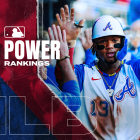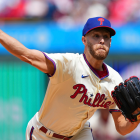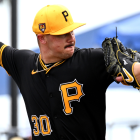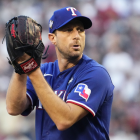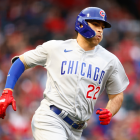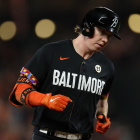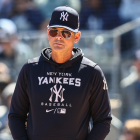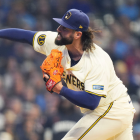For the first time since 2014, the Texas Rangers failed to qualify for the postseason this year. The club has already clinched a losing season, only their second since 2008, and they'll be watching the playoffs from home after back-to-back AL West titles in 2015 and 2016.
What went wrong for the 2017 Rangers? Well, a lot. The bullpen aside from lefty funkballer Alex Claudio was unreliable, the back of the rotation was a revolving door of replacement level arms, and the lineup had way too many holes. Rougned Odor is having, by far, the worst season ever for a player with 30-plus home runs. Check it out:
- Rougned Odor, 2017 Rangers: 30 HR and 65 OPS+
- Tony Batista, 2004 Expos: 32 HR and 81 OPS+
- Vinny Castilla, 1999 Rockies: 33 HR and 84 OPS+
- Tony Armas, 1983 Red Sox: 36 HR and 85 OPS+
- Chris Young, 2007 Diamondbacks: 32 HR and 88 OPS+
Odor's .252 on-base percentage would be the lowest among hitters with enough plate appearances to qualify for the batting title since Vernon Wells had a .248 on-base percentage for the 2011 Angels. Mike Napoli, by the way, would be third on the list above with one more home run. He has 29 homers and an 82 OPS+.
There were of course some bright spots for the Rangers this season. Elvis Andrus took his offense to another level and smacked 20 homers -- his previous career high was eight -- with a 108 OPS+. Joey Gallo, even with all the strikeouts, established himself as a 40-ish home run hitter. Andrew Cashner was a revelation on a one-year contract, throwing 160 2/3 innings with a 3.42 ERA (138 ERA+).
The Rangers front office, to their credit, acted decisively at the trade deadline and moved Yu Darvish and Jonathan Lucroy for prospects before potentially losing them for nothing as free agents after the season. Darvish went to the Dodgers for three prospects, including highly touted hitting machine Willie Calhoun, who clubbed his first MLB home run earlier this week:
Congrats, @11WillieCalhoun!
— Texas Rangers (@Rangers) September 27, 2017
"He'll never forget his first Big League home run and he'll never forget who it was against." pic.twitter.com/k40k7Psdxf
First career homer against Justin Verlander? That'll do, kid. Calhoun figures prominently into the team's plans going forward even if his ultimate position is unclear. The Rangers have played him in left field, but it's possible he could wind up at first base or even designated hitter long-term. Calhoun's best position is batter's box.
The front office did what they had to do at the trade deadline, and this offseason, they have to figure out how to avoid getting stuck in the middle. By that I mean being too good to rebuild but not good enough to truly contend. That's where the Rangers -- and many other teams, for that matter -- were this season. They were good enough to hang around the postseason race for a while, but their chances of making a real run never felt all that good.
Trading Darvish before his contract expired was a smart move. The Rangers will face similar situations next season, as several core players can become free agents after the season:
- Elvis Andrus: Can opt out of the final five years and $73 million on his contract. A year or two ago it seems unlikely, but if Andrus has another strong season in 2018 and can hit the open market as a 30-year-old Gold Glove caliber shortstop, he'll be in very high demand.
- Adrian Beltre: Will make $18 million in 2018, then become a free agent after the season. Beltre was great in 2017 (134 OPS+), though he was limited to 93 games by nagging injuries. Also, the future Hall of Famer will be 39 in April. How much longer will he be elite player?
- Cole Hamels: An oblique injury earlier this year ensures Hamels won't reach the innings total necessary to vest his 2019 option, meaning he can become a free agent next winter. Hamels will turn 34 in December and is starting to show signs of decline, most notably by posting a career low 6.2 K/9 in 2019.
There are two ways to look at this, I suppose. The Rangers could try to load up this offseason -- I fully expect them to make a strong push to re-sign Darvish -- and win with Andrus and Beltre and Hamels in 2018, or they could take a step back and rebuild, which likely entails trading those guys. There's a valid argument to be made in favor of both scenarios, going for it and rebuilding. Me? I say go for it. Winning is cool. But no one asked me.
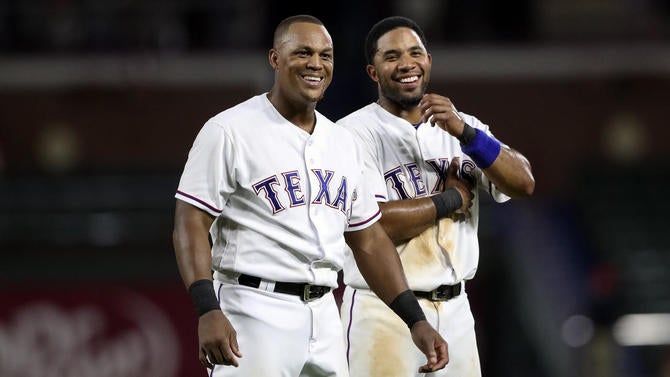
Point is, the Rangers have to commit to one of those two paths and I mean really commit to it. No half measures, because those won't get them over the hump and back into the postseason next year. Is it reasonable to expect Odor to be better in 2018? Yes. Is it reasonable to think Nomar Mazara could take his game to another level? Also yes. Is it reasonable to expect a full season of Calhoun to improve the offense? Yes again. But those guys can't be counted on as the only source of improvement.
The Rangers have an obvious need for another middle of the order bat (Napoli was supposed to be that guy in 2017), depth at the back of the rotation (Tyson Ross was supposed to be that guy in 2017), and late inning options in the bullpen. That's quite the list and it looks daunting heading into the postseason. Perhaps that will push the Rangers to rebuild? I doubt it. I don't think that is in general manager John Daniels' DNA. He tries to put a contender on the field every season.
Overall, the 2017 season was a disappointing one for the Rangers, who would've been closer to a postseason spot had Beltre and Hamels stayed healthy all season, and had Odor been merely an average hitter instead of one of the worst in baseball. The core of a contending team is in place. Now it's up to the front office to get that core some support, otherwise they're heading for another season in which they're good enough to be relevant but not good enough to be a World Series threat.














